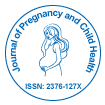当社グループは 3,000 以上の世界的なカンファレンスシリーズ 米国、ヨーロッパ、世界中で毎年イベントが開催されます。 1,000 のより科学的な学会からの支援を受けたアジア および 700 以上の オープン アクセスを発行ジャーナルには 50,000 人以上の著名人が掲載されており、科学者が編集委員として名高い
。オープンアクセスジャーナルはより多くの読者と引用を獲得
700 ジャーナル と 15,000,000 人の読者 各ジャーナルは 25,000 人以上の読者を獲得
インデックス付き
- 索引コペルニクス
- Google スカラー
- アカデミックキー
- レフシーク
- ハムダード大学
- エブスコ アリゾナ州
- OCLC-WorldCat
- パブロン
- ジュネーブ医学教育研究財団
- ユーロパブ
- ICMJE
役立つリンク
オープンアクセスジャーナル
このページをシェアする
抽象的な
Correlation between Clinical and Histopathologic Chorioamnionitis in HIV-positive Women
Hannah Anastasio, Meredith Birsner, Cynthia Argani, Jean Anderson, Frederic Askin and Zahra Maleki
Objective Histopathologic findings of intraamniotic infection include chorioamnionitis and funisitis. Chorioamnionitis is a recognized risk factor for intrapartum HIV transmission. We sought to determine whether histologic placental findings in patients with clinical chorioamnionitis were different between HIV-positive and HIV-negative patients. Study design Retrospective case control study of all cases of clinical chorioamnionitis at The Johns Hopkins Hospital between 1996 and 2010, diagnosed by presence of maternal fever and one or more of the following criteria: maternal or fetal tachycardia, fundal tenderness, malodorous amniotic fluid, or elevated WBC. Placentas of HIV-positive women were matched 1:2 to HIV-negative controls. Placentas were reviewed by two independent pathologists, blinded to HIV status, using 2003 Society for Pediatric Pathology criteria. Primary outcome was histopathologic finding of chorioamnionitis by maternal grade/stage and fetal grade/stage. Results Of 28,915 deliveries, 2,228 met criteria for chorioamnionitis (7.7%), and 11 were HIV-positive (0.5%); one had dichorionic-diamnionic twins with placentas evaluated separately. Parity, gestational age, mode of delivery, Apgar scores, and infant birth weight were similar between groups. WBC at delivery was significantly lower in HIVpositive patients (9 vs. 13 p<0.01), and women with HIV were significantly older (34.4 vs 28.9 years, p=0.05). HIVpositive patients were no more likely to have histologic chorioamnionitis than their HIV-negative controls. Maternal and fetal stage/grade did not vary significantly between groups. Conclusion Among patients with clinical chorioamnionitis, histopathologic confirmation does not differ significantly between HIV-positive and -negative patients. Additionally, histologic chorioamnionitis in the HIV-positive population does not appear to differ in severity from that in the HIV-negative population. White blood cell count at delivery is significantly lower in HIV-positive women with chorioamnionitis compared to HIV-negative controls.

 English
English  Spanish
Spanish  Chinese
Chinese  Russian
Russian  German
German  French
French  Portuguese
Portuguese  Hindi
Hindi